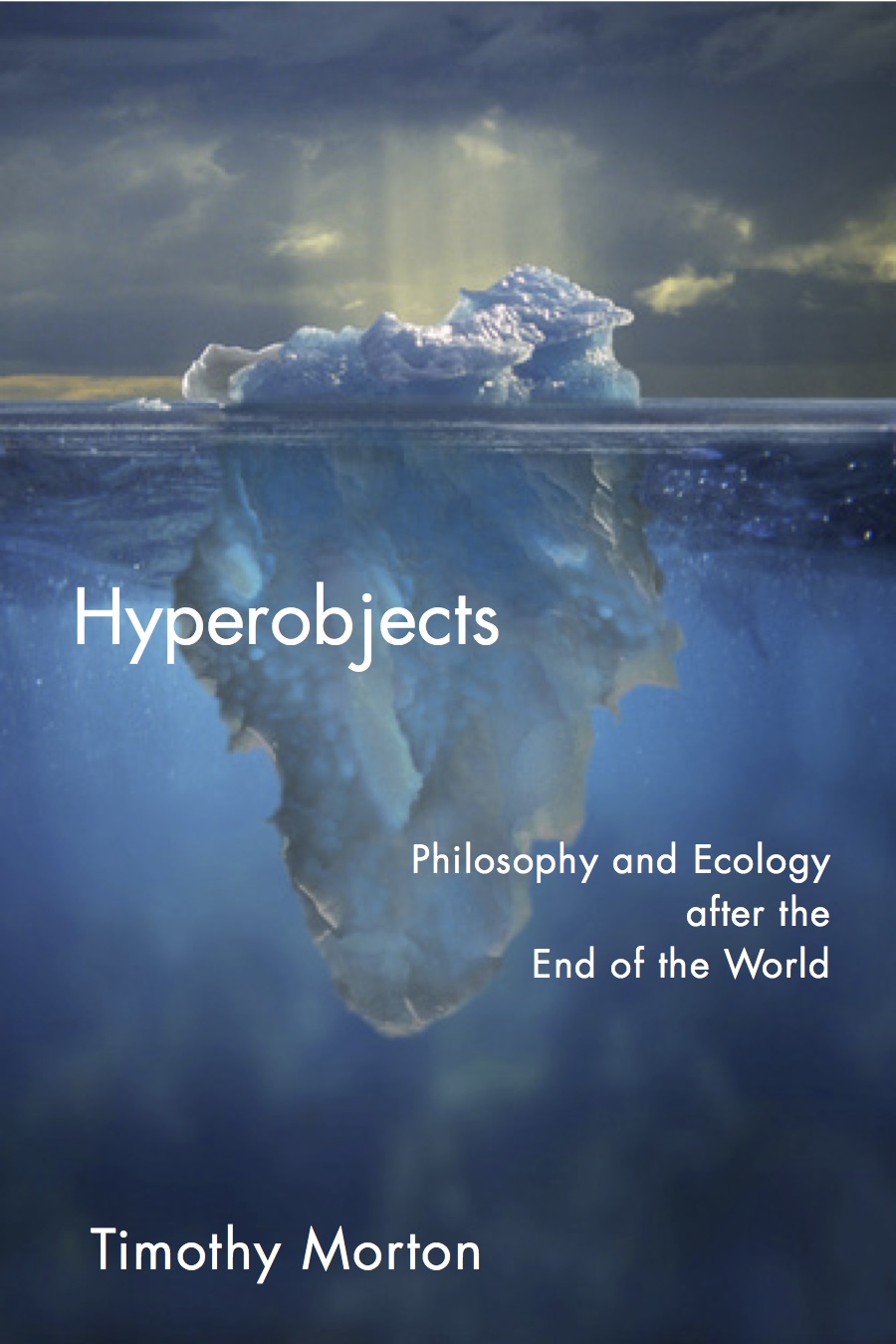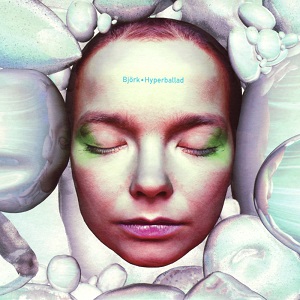Hyperobjects
A presentation by Joel Gethin Lewis
Enquiry Weekend, Saturday 4th November 2017
Summary:
- Introduction
- We are not surrounded
- All is mesh
- What is a Hyperobject?
- Some examples of Hyperobjects
- The Qualities of Hyperobjects
- Why I am interested in Hyperobjects
1. Introduction.
It started with a Tweet:
“You think ecologically tuned life means being all efficient and pure. Wrong. It means you can have a disco in every room of your house.”
— Tim Morton (@the_eco_thought) 29 March 2016
1. Introduction.

was written in 2013.
1. Introduction.

was written by Tim Morton.
1. Introduction.

was inspired by Björk.
2. Before Hyperobjects: We are not surrounded:
“Ecological writing keeps insisting that we are "embedded" in nature. Nature is a surrounding medium that sustains our being. Due to the properties of the rhetoric that evokes the idea of a surrounding medium, ecological writing can never properly establish that this is nature and thus provide a compelling and consistent aesthetic basis for the new worldview that is meant to change society. It is a small operation, like tipping over a domino...”
2. Before Hyperobjects: We are not surrounded:
“...Putting something called Nature on a pedestal and admiring it from afar does for the environment what patriarchy does for the figure of Woman. It is a paradoxical act of sadistic admiration.”
I.e. “ecological criticism must be divested of the bifurcation of nature and civilization, or the idea that nature exists as something that sustains civilization, but exists outside of society's walls.”
3. Before Hyperobjects: All is mesh:
“The ecological thought does, indeed, consist in the ramifications of the "truly wonderful fact" of the mesh. All life forms are the mesh, and so are all the dead ones, as are their habitats, which are also made up of living and nonliving beings. We know even more now about how life forms have shaped Earth (think of oil, of oxygen—the first climate change cataclysm)....”
3. Before Hyperobjects: All is mesh:
“...We drive around using crushed dinosaur parts. Iron is mostly a by-product of bacterial metabolism. So is oxygen. Mountains can be made of shells and fossilized bacteria. Death and the mesh go together in another sense, too, because natural selection implies extinction.”
4. What is a Hyperobject?
An object that is so massively distributed in time and space that it transcends spatio-temporal specificity.
5. Some examples of Hyperobjects:
- Global warming
- Styrofoam
- Radioactive plutonium
6. The Qualities of Hyperobjects:
- Viscous
- Molten
- Nonlocal
- Phased
- Interobjective
6.1. Viscous
Hyperobjects adhere to any other object they touch, no matter how hard an object tries to resist. In this way, hyperobjects overrule ironic distance, meaning that the more an object tries to resist a hyperobject, the more glued to the hyperobject it becomes.
6.2. Molten
Hyperobjects are so massive that they refute the idea that spacetime is fixed, concrete, and consistent.
6.3. Nonlocal
Hyperobjects are massively distributed in time and space to the extent that their totality cannot be realised in any particular local manifestation. For example, global warming is a hyperobject that impacts meteorological conditions, such as tornado formation. According to Morton, though, objects don't feel global warming, but instead experience tornadoes as they cause damage in specific places. Thus, nonlocality describes the manner in which a hyperobject becomes more substantial than the local manifestations they produce.
6.4. Phased
Hyperobjects occupy a higher-dimensional space than other entities can normally perceive. Thus, hyperobjects appear to come and go in three-dimensional space, but would appear differently if an observer could have a higher multidimensional view.
6.5. Interobjective
Hyperobjects are formed by relations between more than one object. Consequently, objects are only able to perceive to the imprint, or "footprint," of a hyperobject upon other objects, revealed as information. For example, global warming is formed by interactions between the Sun, fossil fuels, and carbon dioxide, among other objects. Yet, global warming is made apparent through emissions levels, temperature changes, and ocean levels, making it seem as if global warming is a product of scientific models, rather than an object that predated its own measurement.
7. Why I'm interested:
- Not po faced! (Disco in every room)
- It's a methodology. (Let's get going)
- Can be enacted through art. (Let's make things that help us think)
- Educates people about higher dimensional thought. (Four dimension shadows are three dimensional objects?)
- Echoes of other philosophies. E.g. Zen and Shamanism
One more thing:
“According to Morton, hyperobjects not only become visible during an age of ecological crisis, but alert humans to the ecological dilemmas defining the age in which they live. Additionally, the existential capacity of hyperobjects to outlast a turn toward less materialistic cultural values, coupled with the threat many such objects pose toward organic matter (what Morton calls a "demonic inversion of the sacred substances of religion"), gives them a potential spiritual quality, in which their treatment by future societies may become indistinguishable from reverential care.”
Thanks!
Website:
www.joelgethinlewis.com
Slides:
www.joelgethinlewis.com/presentations/Hyperobjects2017/
Twitter:
@joelgethinlewis